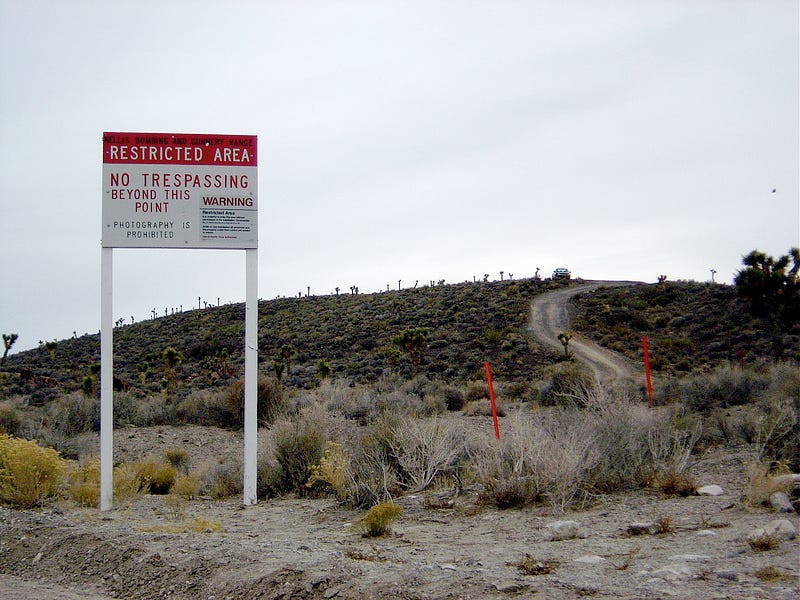The History of the Mystery of Area 51
By Sophia Anain, Behavioral Neuroscience, 2022

From numerous conspiracy theories to the organization of a raid, Area 51 has captured the public’s curiosity for decades. A YouGov poll conducted in 2019 found that 54 percent of U.S. adults believe that the government knows more about unidentified flying objects (UFOs) than it admits. With more attention on the base this year than ever before, one must wonder — what sparked America’s fascination with Area 51? Why do we think there are aliens there at all?
With more attention on the base this year than ever before, one must wonder — what sparked America’s fascination with Area 51?
While suspicion surrounding Area 51 has been circulating since the 1980s, the government base has been around far longer. In 1955, CIA officer Richard Bissell traveled to Nevada and surveyed 38,400 acres of uninhabited land northwest of Las Vegas. Within three years, this territory was withdrawn from public use by the US Atomic Energy Commission. For the next fifteen years, the research conducted at Area 51 was done under strict confidentiality. In 1974, astronauts from the Skylab space station took photographs of the region. Suspiciously, the National Photographic Interpretation Center immediately removed the images and had them stored in a restrictive vault; no one except government officials have seen the actual images.
Area 51 owes most of its infamy to Bob Lazar. In 1989, Lazar claimed to have worked at the military base trying to “back-engineer a downed alien spacecraft.” While Lazar’s claims have never been verified, his allegations sparked America’s fascination with Area 51 and many reports of UFO sightings soon after. Speculations only increased over the next decade, particularly in 1996 when President Clinton signed a Presidential Determination making the base exempt from “any federal, state, interstate, or local hazardous or solid waste laws that might require disclosure of classified information concerning that location to unauthorized persons.” Though laws were previously made protecting Area 51, its existence was not officially acknowledged until 2013. At this time, the Freedom of Information Act required the release of Area 51 related documents from the national security archive. The released reports detailed the testing of a U-2 spy plane in the area. Rather than confirming rumors of extraterrestrial aircrafts, this explained the numerous UFO sightings in the area.
For the next fifteen years, the research conducted at Area 51 was done under strict confidentiality.
About six years later, 21-year-old college student Matty Roberts would spark a movement to storm the base when he was “bored at 2 a.m.” While the mass media coverage and a warning from the air force resulted in a small turnout, the air of mystery surrounding Area 51 persists.
